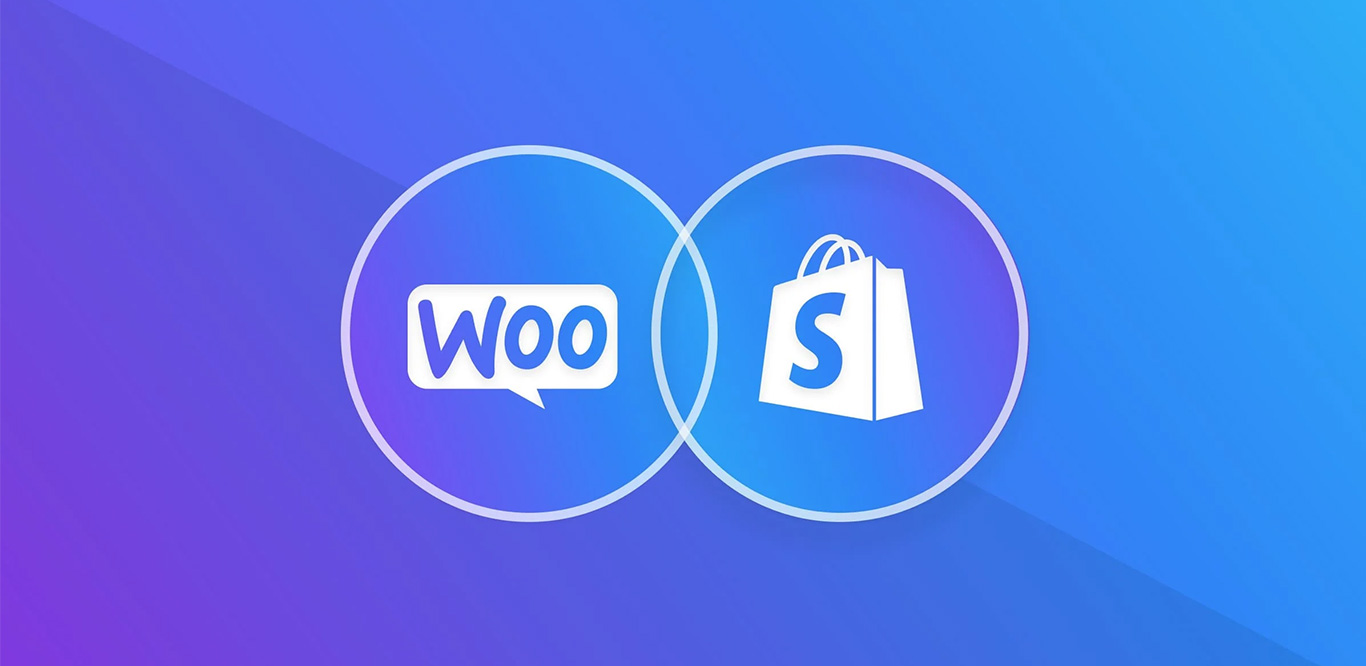Setting up a website is a crucial task that is filled with a number of endless choices such as which hosting provider to choose, which theme to select, what domain to purchase, etc. It’s even more complicated when it’s an eCommerce website because then you have to select between Shopify and WooCommerce.
Of course, there are a lot of options available in the market other than these two, but that’s not what we’re here to discuss. WooCommmerce and Shopify are two of the most popular platforms and in this blog, we are going to compare them for you so you can select the best one for your website/online store.
The comparison is purely on the basis of its meaning, the features and functionalities it offers, the support, and the pricing, free and paid themes, extensions, plugins, and much more. Read the entire blog to have a close look at both the platforms and figure out which one comes on the top.
Shopify VS WooCommerce – The Meaning
Shopify is an all-in-one platform that allows you to build an online store, manage products, and handle payments by using a single service.
WooCommerce is an open-source solution that can be made on top of WordPress. It enhances the content management system (CMS) while allowing you to run an online store.
Shopify VS WooCommerce – The Features
Below is a feature comparison chart of some of the exciting features offered by Shopify and WooCommerce.
| Features | Shopify | WooCommerce |
| Price | Starting from $29/month, Shopify offers three different pricing plans for its users. | WooCommerce is completely free. But you need to buy our own hosting. |
| Domain | Shopify comes with a free subdomain for all plans (myshopify.com). | You can buy your own domain. |
| Products | It allows you to add unlimited products to your store. | WooCommerce also enables us to add unlimited products/ |
| Payment Fees | You need to pay specific fees for all your payments. | It depends on the payment processors you add. |
| Feature Extension | This platform offers its own app shop that allows the users to extend the functionality using free and paid apps. | This platform offers extensions (just like WordPress Plugins). You can add functionality to your store using free and premium varieties. |
| Support | It offers 24/7 support. | The support is offered through a help desk and extensive documentation for the software. |
| Themes | You can customize the look and feel of your website with dozens of premium themes. | Free and premium themes available. |
| Security | It comes with an SSL (Secure Socket Layer) certificate with all the plans. | It also comes with SSL support (until you have your own certificate) |
| Analytics | It offers its own analytics system and can also be integrated with Google Analytics. | WooCommerce can be integrated with Google Analytics through a plugin. |
As mentioned in the above table, you need to buy your own web hosting while using WooCommerce. At first, it might seem intimidating, but it’s actually not that difficult to handle.
Shopify VS WooCommerce – The Pricing
Shopify offers three different types of basic pricing plans and a custom enterprise option for its users. These three plans are priced at $29 USD/mo., $79 USD/mo., and $299 USD/mo. respectively. The main difference between the pricing of the plans is the fees it charges for accepting credit cards.
These differences may seem little at first, but everyone knows how quickly credit card fees rack up. Along with that, each successive plan minimizes the transaction fees for using external payment options like Stripe and Paypal.
Also, each Shopify plan enables a different number of available staff accounts along with the ability to send gift cards, and recover abandoned shopping carts.
WooCommerce is completely free, but you are required to set up hosting on your own. The cost of hosting may vary depending upon the size of your store but a good operation may cost you less than Shopify’s basic plan.
On the other hand, WooCommerce extensions may cost more upfront as compared to Shopify counterparts. But they are mostly sold as one-time licenses instead of monthly subscriptions like Shopify.
Shopify VS WooCommerce – Which Is The Right Choice For You?
It’s the end of the Shopify VS WooCommerce brawl and now it’s time to decide which platform is best for you. It is normal to be confused about choosing an eCommerce platform. Running an online store is a huge responsibility and choosing the wrong platform can cripple your operations from the initial stages.
Both Shopify and WooCommerce are great platforms and both have their own advantages and disadvantages. When you select the one that best suits you, you’ll have made the right decision.
Who Can Choose Shopify?
Shopify is a go-to platform for those users who don’t want to deal with the complex setup process and need premium support. But this service renders a smooth journey at the expense of a monthly subscription.
- If you don’t have a website or if you are starting from scratch, choose Shopify to launch your eCommerce store.
- You can simply use Shopify if you don’t have any experience in coding or you don’t want to hire experts.
- You can integrate your online store with an offline store by using Shopify.
- If 24/7 customer support is your primary need, Shopify is the best for your eCommerce store.
Who Can Choose WooCommerce?
WooCommerce is a good choice due to its inherent flexibility. But, its setup process is more complex. It is great for those who want to customize every aspect of their experience and have an affinity for open-source software.
- You can simply use WooCommerce if you have hands-on experience using an open-source platform.
- Go for WooCommerce if you want to customize every aspect of the website/online store.
- If you don’t require 24/7 support and can resolve issues through various documentation, WooCommerce is a perfect choice.
- If you are on the pocket-friendly side, WooCommerce is totally free. You just need to pay for the hosting of your website.
If you are looking to hire Shopify or WooCommerce developer for store development solutions then get in touch with us.
Read Also: Top Shopify Development Trends for 2022




